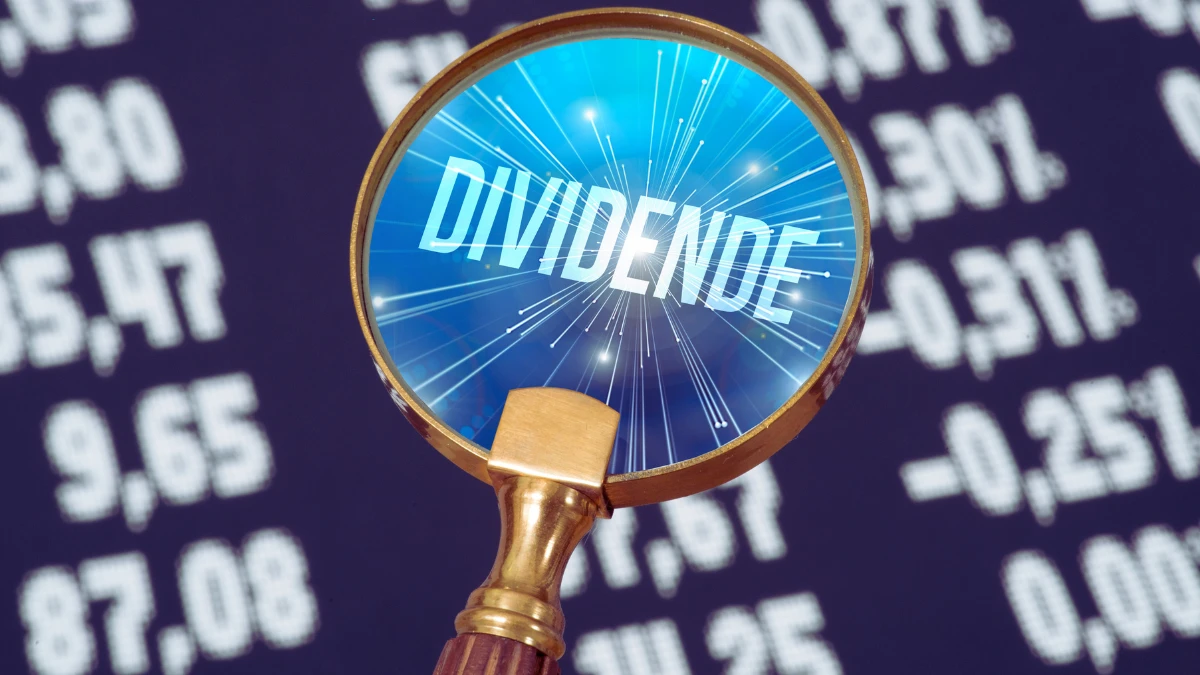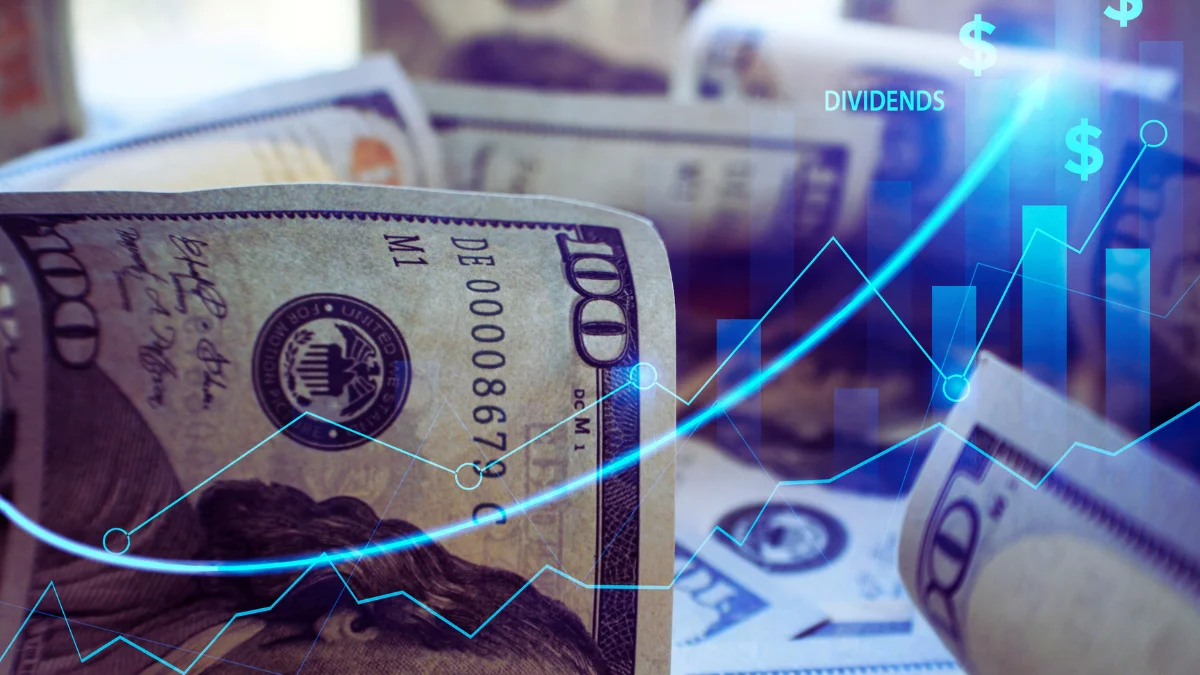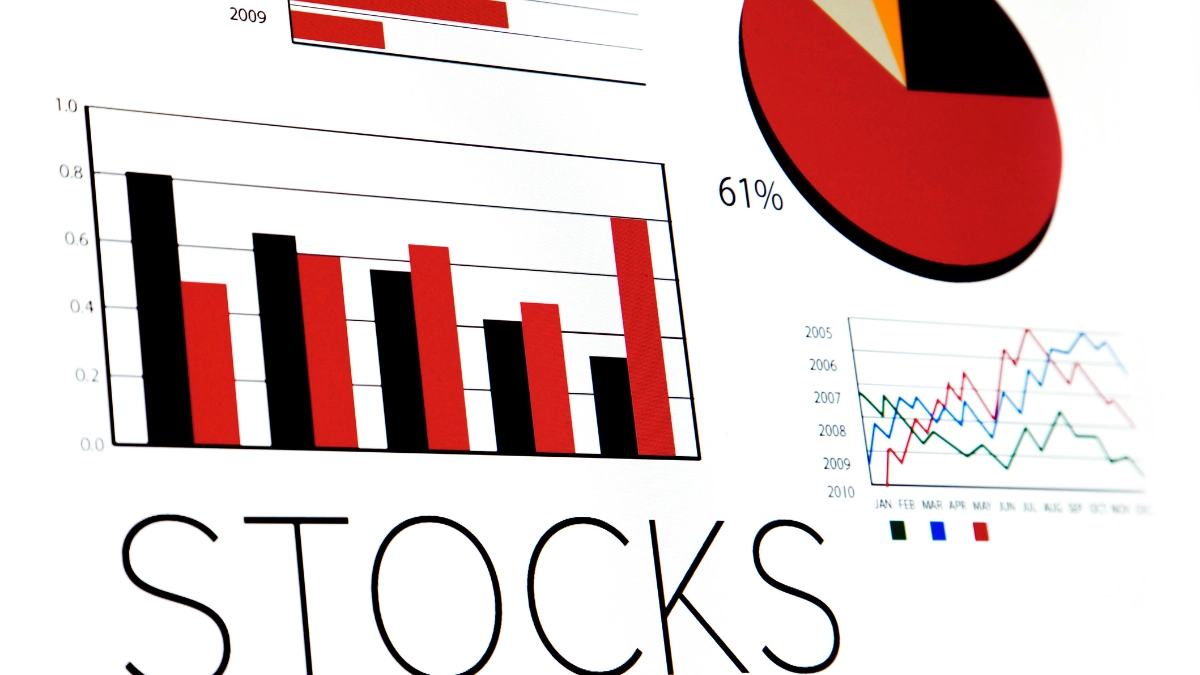My friend laughed when I bought McDonald’s stock instead of Dogecoin. He showed me screenshots of 300% crypto gains while I collected measly 3% dividends.
Fast forward two years: his portfolio plummeted 70% when the crypto bubble burst. My boring dividend stocks? They climbed 42% and paid me $3,200 in cash.
Every crypto crash reminded him that speculation isn’t investing. His sleepless nights monitoring charts contrasted sharply with my quarterly dividend deposits.
Real companies with actual customers beat digital coins backed by hope and hype.
Here’s how you can build your wealth through boring dividend investing.
Why My ‘Boring’ Dividend Portfolio Outperformed My Friend’s Crypto Bets
While my friend chased the latest cryptocurrency trends, I stuck with established companies that pay regular dividends. The results speak for themselves after three years of comparison.
1. Lower Risk and Volatility

Market crashes reveal the true nature of different investments. When crypto prices dropped 70% overnight, my dividend stocks fell only 15%.
This stability comes from investing in mature companies with proven business models rather than speculative assets.
Blue-chip dividend stocks have weathered countless economic storms. Companies like Johnson & Johnson and Coca-Cola survived the Great Depression, multiple recessions, and global pandemics.
Their stock prices move in measured steps, not in wild swings that can wipe out portfolios in a matter of days.
Sleep becomes easier when your investments aren’t subject to Twitter rumors or celebrity endorsements.
Dividend companies focus on fundamentals like revenue growth and profit margins. This approach shields investors from the emotional rollercoaster that crypto traders experience daily.
2. Reliable and Consistent Income

Crypto promises wealth but delivers uncertainty. My dividend portfolio sends me checks every quarter, regardless of market conditions.
These payments arrive like clockwork, providing steady cash flow that crypto simply cannot match.
Companies have paid dividends for decades through wars, recessions, and global crises. They understand that shareholders depend on this income stream.
Management teams work hard to maintain payments because cutting dividends signals financial distress and destroys investor confidence.
Reinvesting these quarterly payments creates a snowball effect. Each dividend buys more shares, which generate more dividends next quarter.
This compounding mechanism turns small investments into substantial wealth over time. Crypto offers no such predictable growth pattern.
3. Long-Term Growth and Capital Appreciation

Established dividend companies grow their businesses methodically. They expand into new markets, develop innovative products, and increase efficiency year after year.
This steady progress translates into rising stock prices that compound alongside dividend payments.
Warren Buffett built his fortune by owning shares in companies that consistently increase their value.
These businesses solve real problems for real customers, generating genuine profits that support both dividends and stock price appreciation. The growth may seem slow, but it accumulates into substantial wealth.
Crypto relies on speculation and hype cycles. Dividend stocks depend on actual business performance.
When a company increases sales by 10% annually for twenty years, shareholders benefit from both higher dividends and appreciating stock values. This dual return stream creates lasting wealth.
4. Tax Advantages

Uncle Sam treats dividend income more favorably than most other investment gains. Qualified dividends face capital gains tax rates, which are significantly lower than ordinary income rates. This tax efficiency keeps more money in your pocket.
Crypto trading generates short-term capital gains taxed as regular income. Every trade creates a taxable event, and the IRS wants its share immediately.
Day traders often discover that taxes consume a large portion of their profits, especially in higher income brackets.
Long-term dividend investors benefit from tax-deferred growth through reinvestment plans.
They pay taxes only on dividends received, not on unrealized stock appreciation. This structure allows wealth to compound faster than investments subject to frequent taxation from trading activity.
5. Inflation Hedge

Rising prices erode purchasing power, but dividend companies can raise their payments to keep pace.
McDonald’s has increased its dividend for 47 consecutive years, protecting shareholders from inflation’s impact. This adaptability makes dividend stocks superior inflation hedges.
Companies pass increased costs to customers through higher prices. When inflation drives up expenses, successful businesses adjust their pricing accordingly.
Shareholders benefit because higher revenues support larger dividend payments that maintain real purchasing power over time.
Bitcoin advocates claim it hedges against inflation, but the evidence remains mixed. Cryptocurrency prices often move independently of inflation rates, failing to provide consistent protection.
Dividend stocks offer tangible businesses that can adapt their operations and pricing to inflationary environments.
How You Can Build a Dividend Portfolio Too
Building your dividend portfolio requires strategy and patience, but the process is straightforward. Anyone can start creating steady income streams by following these proven steps.
1. Define Your Investment Goals

Clear objectives guide every successful investment strategy. Some investors prioritize monthly income to supplement their salary, while others focus on long-term wealth accumulation through reinvestment.
Your age, financial situation, and retirement timeline determine which approach suits you best.
Young professionals often emphasize growth over immediate income. They can afford to reinvest dividends for decades, allowing compound returns to build substantial wealth.
Retirees typically need current income to cover living expenses, making high-yielding stocks more attractive than growth-oriented dividend payers.
Risk tolerance plays a crucial role in goal setting. Conservative investors prefer utility stocks and consumer staples that pay modest but reliable dividends.
Aggressive investors might accept lower yields from companies with strong dividend growth potential. Understanding your comfort level prevents emotional decisions during market volatility.
2. Research Dividend-Paying Stocks

Quality research separates successful dividend investors from those who chase yield without substance. Start by examining companies that have paid dividends consistently for at least ten years.
This track record demonstrates management’s commitment to returning cash to shareholders through various economic cycles.
Dividend aristocrats represent the gold standard of dividend investing. These S&P 500 companies have increased their dividends annually for 25 consecutive years or more.
Companies like Procter & Gamble and Walmart earned this designation by growing their businesses and sharing profits with investors year after year.
Industry leaders often make excellent dividend candidates. Look for companies with competitive advantages, strong brand recognition, and pricing power.
Microsoft dominates software, while Visa controls payment processing networks. These market positions generate consistent cash flows that support reliable dividend payments and regular increases.
3. Diversify Across Sectors and Industries

Spreading investments across different sectors protects your portfolio from industry-specific downturns.
Energy companies struggled during the oil price collapse, but healthcare and consumer goods stocks continued paying dividends. This diversification smooths returns and reduces overall portfolio risk.
Technology, healthcare, consumer goods, utilities, and financial services each offer unique dividend opportunities. Tech giants like Apple provide growth potential with modest yields.
Utility companies offer higher yields but slower growth. Mixing sectors creates a balance between income and appreciation potential.
Geographic diversification adds another layer of protection. Canadian banks, European utilities, and Asian consumer companies expand your opportunity set beyond domestic markets.
Exchange-traded funds simplify international diversification by providing exposure to foreign dividend stocks through single purchases.
4. Assess Financial Stability and Payout Ratios

Strong balance sheets support sustainable dividend payments through economic challenges.
Companies with low debt levels and healthy cash flows can maintain payments when revenues decline temporarily. Examine debt-to-equity ratios, current ratios, and free cash flow to gauge financial strength.
Payout ratios reveal whether dividends are sustainable or at risk of reduction. This metric shows what percentage of earnings companies pay as dividends.
Ratios below 60% typically indicate safe payments with room for growth. Ratios above 80% suggest potential trouble if earnings decline.
Credit ratings provide professional assessments of financial stability. Rating agencies like Moody’s and Standard & Poor’s evaluate companies’ ability to meet financial obligations.
Investment-grade ratings indicate lower risk, while speculative ratings suggest higher dividend risk. Focus on companies with strong credit profiles for reliable income.
5. Reinvest Dividends for Compounding Growth

Automatic reinvestment transforms quarterly payments into powerful wealth-building tools.
Instead of spending dividend checks, use them to purchase additional shares. These new shares generate their dividends, creating exponential growth over time through mathematical compounding.
Dividend reinvestment plans (DRIPs) offered by many companies eliminate trading commissions and allow fractional share purchases.
A $50 dividend payment buys exactly $50 worth of stock, regardless of share price. This efficiency maximizes reinvestment impact and accelerates portfolio growth.
Compound growth becomes dramatic over extended periods. Reinvesting a 4% dividend yield doubles your share count every 18 years. After 36 years, you own four times the original shares, each paying dividends on the full position.
This exponential growth explains why patient investors accumulate substantial wealth through dividend reinvestment.
6. Monitor and Adjust Your Portfolio

Regular portfolio reviews ensure your investments remain aligned with your goals and market conditions. Schedule quarterly check-ups to evaluate dividend payments, company performance, and portfolio balance.
This discipline prevents neglect while avoiding excessive trading that erodes returns through fees and taxes.
Company fundamentals change over time, requiring occasional adjustments. A retailer might struggle with online competition, threatening future dividend payments.
Financial metrics, earnings reports, and management commentary provide early warning signs of potential problems that warrant position changes.
Rebalancing maintains proper diversification as stock prices fluctuate. Successful investments grow to represent larger portfolio percentages, potentially creating concentration risk.
Trimming oversized positions and adding to underweighted sectors keeps your portfolio aligned with your original diversification strategy.
